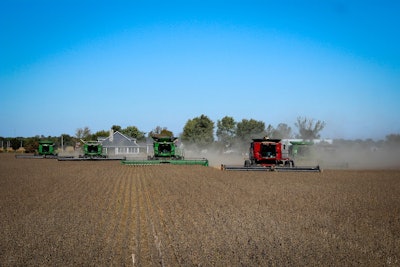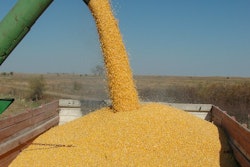
Trade Expectations for Sept 30 Reports
USDA will issue Sept 1 grain stocks estimates, wrapping up the corn and bean year, and will update small grains production with its Sept 30 reports.
The estimates discussed are from Reuters' poll of analysts.
Corn ending stocks are seen at 1,155 million bushels; if confirmed, that would be down notably from 2019/20’s stocks at 1,919 million. The trade looks for a minor revision of 10 million bushels from the 2020 corn crop.
Bean ending stocks are seen at 174 million bushels; like corn, that would be down substantially from 2019/20’s final total at 525 million. No major production revision is expected for the 2020 bean crop.
On the wheat side, Sept 1 stocks are estimated at 1,852 million bushels; that would be down from 2,158 million last year and underscores the tightening situation we are facing for wheat balance sheets.
For production, the trade looks for a trim to all wheat from USDA’s August total at 1,697 million bushels to 1,680 million.
Most of the cut is expected for non-durum spring wheat production, which is seen at 327 million bushels. But, the range of expectations is extremely wide from a low end of 273 million to a high of 357 million.
FBN’s Take On What It Means: Generally, the reports lean supportive as they should underscore a tightening stocks situation versus a year ago across corn, beans, and wheat. Plus, on the production side, the trade looks for a cut to spring wheat, which could come from smaller harvested area and/or smaller yields. Surprises for corn, beans, or wheat would be much larger totals than what the trade leans towards.

Louis Dreyfus and Others Shutter Soy Crush Plants in China
At least 20 soybean crushing plants in China have shuttered to comply with mandates on power consumption.
The plants include one facility owned by Louis Dreyfus; another owned by Bunge responded to the power mandates but did not see significant production changes.
Soymeal prices are sharply up in China in response to the closings.
However, there’s little risk of excess soybean stocks, as soybean imports have been relatively weak recently amid already heightened global prices.
FBN’s Take On What It Means: The soy crush plants are the latest industry to feel the pressure from stepped up enforcement of emissions limits in China. Other industries have included fertilizer production and aluminum smelting. While some relief may come amid worries over short-term supplies of soymeal ahead of holidays at the beginning of October, the market does not anticipate a major reversal on the emissions mandates.
FBN Market Advisory services are offered by FBN BR LLC, dba FBN Brokerage, FBN BR and FBN Market Advisory (NFA ID: 0508695)
The risk of trading futures and options can be substantial and may not be suitable for all investors. Past performance is not necessarily indicative of future results.
This is not an offer or solicitation in any jurisdiction where we are not authorized to do business or where such offer or solicitation would be contrary to the local laws and regulations of that jurisdiction, including, but not limited to, persons residing in Australia and Canada.










